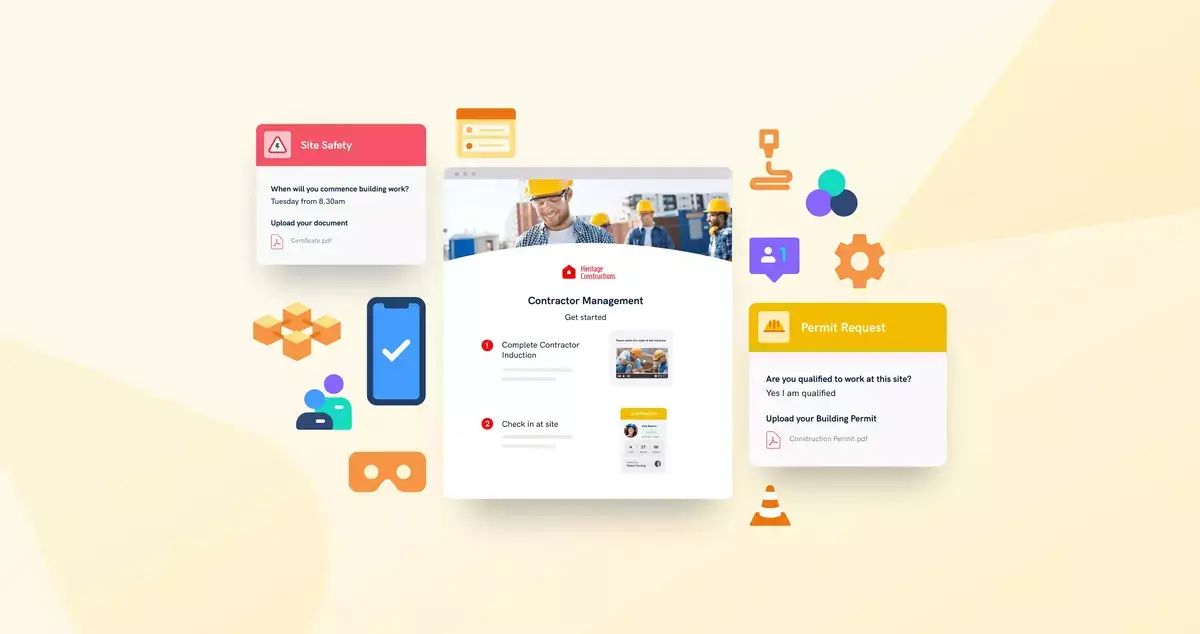
The construction industry has always been at the forefront of technological innovation. In recent years, the rise of artificial intelligence (AI) has had a significant impact on the way buildings are designed, built and operated.
As AI continues to develop, it will become ever more important to design buildings that are able to adapt to changing conditions. This means that architects and engineers will need to collaborate closely with software developers to ensure that their designs are future proofed.
Technological innovation in the construction industry will help keep costs down, improve final products, and lead to a more sustainable future. Perhaps most importantly, it will help draw more talent to an industry that is struggling with a labor shortage.
From VR to drones, the future of the construction sector looks bright. The tools and trends below are already being implemented on job sites around the world, but we can expect to see their use grow in 2022 and beyond.

Digital solutions in construction cover a lot of ground. But the innovations we’re most likely to see now are related to increased efficiency in design planning and site management.
Building information modeling (BIM), for example, will move to the cloud to allow all parties (from architects to contractors) to collaborate on and coordinate construction projects from anywhere in the world, and even from mobile devices. Right now, smartphones are the most used technology on construction sites.
Evolving construction management software solutions and new mobile apps enable “connected construction” by helping team leaders compile data, share files, and monitor worksites with ease. These collaborative, cloud-based tools can even make quick work of budgeting, payroll, compliance, and inventory monitoring/asset tracking.
Mobility, connection, and collaboration are the main goals of most digital tools. The insights collected as a result of digitization will also help feed the next generation of predictive analytics in construction.
The adoption of new digital technology means that more construction processes can become automated. In fact, automation can reach the point where construction companies can employ robots (such as brick-laying robots, drones, automatic pavers, and other self-driving construction vehicles, etc.) to do some of the work.
For example, construction drones are one of the fastest growing trends in the industry. They can be used for mapping large areas, producing thermal images, and aerial photography. Not only do they perform jobs that could be dangerous for humans (reducing liability and labor costs), they also provide real-time, actionable data and can monitor job sites for security purposes.
Other automated tools include digital twin technology and smart sensors that project how a building will operate or provide real-time data on current buildings. This operational data can pave the way for immediate feedback or intervention, helping to streamline everything from security systems to HVAC and producing data for predictive maintenance.
Additive manufacturing (aka 3D printing) can be used in the construction process for anything from prototyping to a full building print. Machine-printed parts also offer improved efficiency and reduced labor costs in an already labor-poor market.
While the printers and materials can be expensive, 3D printing is also a relatively sustainable technology and it fits in well with new BIM methods and other cloud-based software that allows for remote collaboration. Designs can be sent to any printer in the world for further development, and new components can be printed on-site.

Much like digital twinning can help model a building’s potential, AR and VR can help engineers and architects visualize design alterations as well as improve safety and oversight.
Being able to act out scenarios in virtual simulations will also be important for training workers (improving safety along the way), allowing off-site personnel to see what’s happening on a job site from anywhere in the world with just a headset, and allowing designers to get a feel for spaces using virtual projections. In other words, AR and VR headsets allow people to be in two places at once.
Blockchain is a digital ledger system that can securely record transactions between two parties in a way that is simple, secure, permanent and verifiable.
Blockchain technology helps construction businesses cut out the middle-man by allowing two parties to create a “smart contract” to record transactions. Even better, it eliminates the time and money typically spent on intermediaries such as brokers, bankers, or lawyers. It can even help contractors verify the credentials of vendors and suppliers, track assets, and provide a secure and immediate way of transferring payments once the terms of the contract are met.
The construction industry has long had a labor and productivity problem – one that McKinsey & Company estimated costs the economy $1.6 trillion a year, with large projects often taking 20% longer than estimated and running up to 80% over budget.
In other words, the industry is primed to use new technology to speed up inefficient processes, move away from error-prone paper tracking, attract workers, keep workers safe, and increase their productivity.
Contractor management solutions like Sine give construction professionals a streamlined mobile solution to stay connected with a real-time view across their sites. Project leaders can effectively monitor attendance, manage compliance and communicate with contractors to drive a safer construction site.